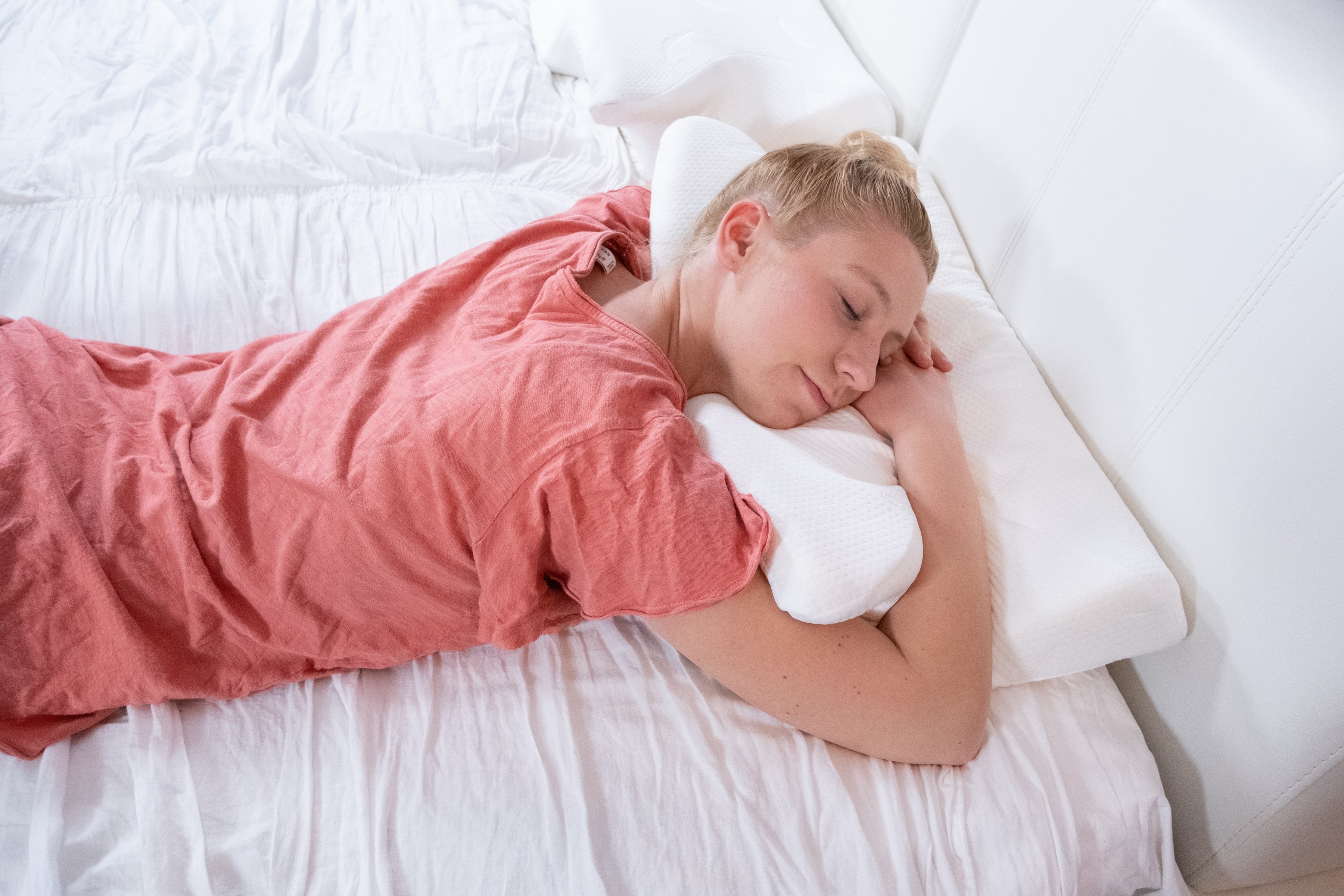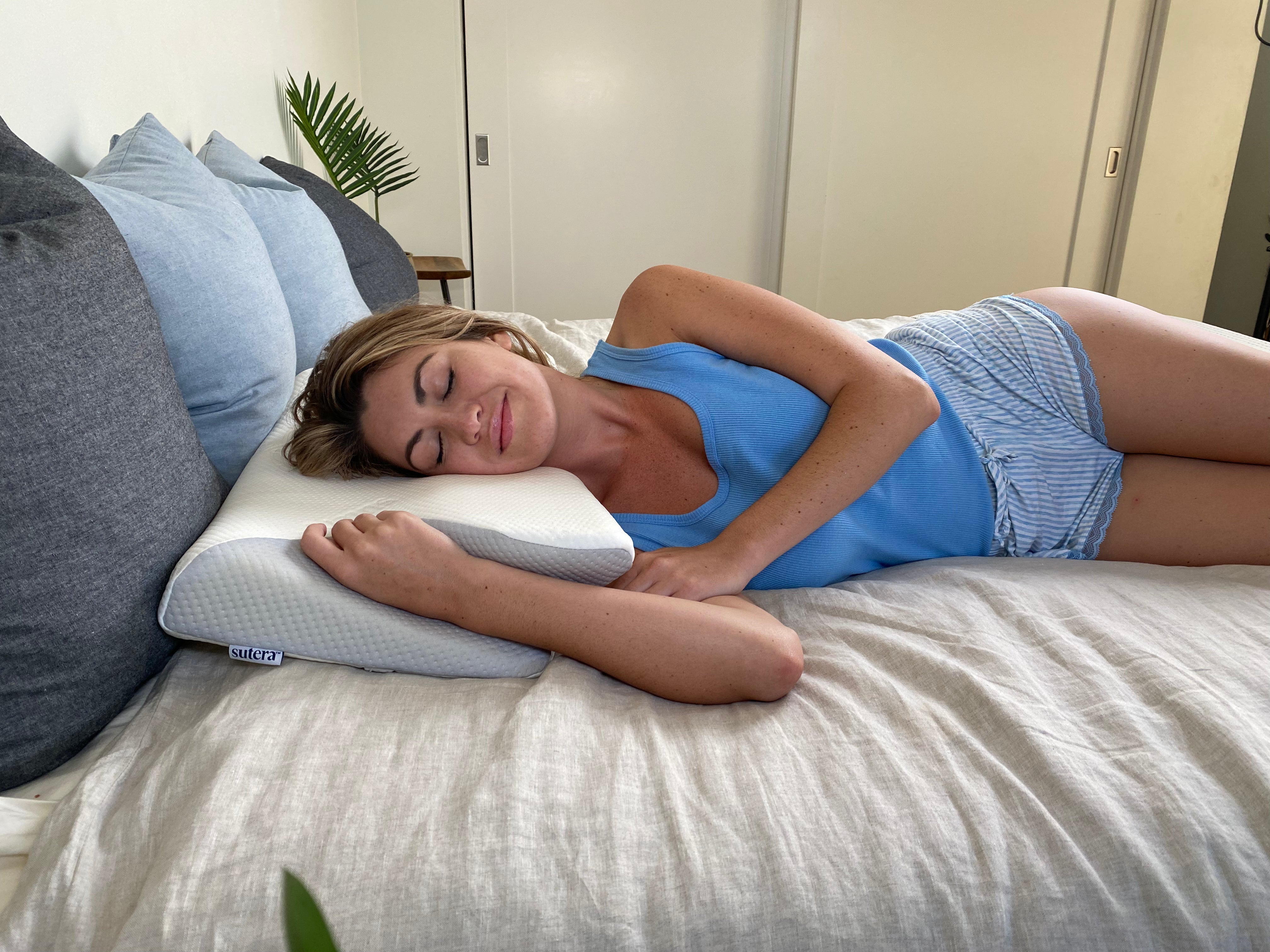The Truth About Bad Pillow Signs
If you've ever shoulder pain keeping me awake, you know the frustration of trying everything and nothing working. Honestly, it's exhausting.
According to research from Harvard Medical School, bad pillow signs affects millions of people, yet most don't understand the real cause.
You're Not Alone in This Struggle
Thousands of people search for "bad pillow signs" every month, desperately seeking answers. After trying everything, most feel hopeless. The frustration is real, and the impact on your daily life is undeniable.
Besides your pillow, room temperature affects sleep quality significantly.
The most common sign is waking with neck pain.
According to recent studies, over 70% of adults experience sleep-related discomfort at least twice a week. If you're reading this, you're likely part of that statistic, and you deserve a real solution that actually works.
The Hidden Cost of Ignoring This Problem
Living with shoulder pain keeping me awake doesn't just affect your nights - it creates a cascade of problems that impact every aspect of your life:
Physical Health Impact
- Decreased productivity at work - Chronic fatigue reduces cognitive function by up to 40%
- Weakened immune system - Poor sleep quality compromises your body's natural defenses
- Increased pain sensitivity - Sleep deprivation amplifies pain perception
- Weight management issues - Disrupted sleep affects hormones that control hunger and metabolism
Mental and Emotional Consequences
- Mood swings and irritability - Sleep loss affects emotional regulation centers in the brain
- Anxiety and stress - Chronic sleep issues create a cycle of worry about sleep itself
- Depression risk - Studies show a 300% higher risk of depression in those with chronic sleep problems
- Relationship strain - Partners affected by restlessness, snoring, or mood changes
Long-term Health Risks
Research from the Mayo Clinic reveals that chronic sleep issues can lead to serious health problems if left unaddressed:
- Increased risk of cardiovascular disease
- Higher likelihood of developing diabetes
- Compromised immune function
- Accelerated aging processes
- Memory and cognitive decline
Why Traditional Solutions Fail
Most people try quick fixes that don't address the root cause. Here's why the typical approaches fall short:
The Generic Pillow Problem
Standard pillows are designed for an "average" person who doesn't exist. Your unique body dimensions, sleep position, and specific pain points require personalized support. One-size-fits-all solutions ignore the biomechanical reality of individual needs.
Surface-Level Fixes
Many solutions focus on comfort without addressing alignment. A pillow might feel soft and luxurious but still leave your spine in a compromised position all night long. Comfort and support are not the same thing - you need both.
Lack of Understanding
Without understanding the science behind sleep positioning and spinal health, it's impossible to make informed decisions. Most people choose pillows based on feel alone, missing the crucial support elements that prevent pain.
The Real Root Cause
The truth is that shoulder pain keeping me awake is usually a symptom of poor spinal alignment during sleep. When your head, neck, and spine aren't properly aligned for 6-8 hours every night, your body can't perform its natural recovery processes.
This misalignment creates muscle tension, restricts blood flow, and puts pressure on nerves - leading to the pain and discomfort you experience every morning. It's not just about the pillow being too firm or too soft; it's about finding the precise support that maintains your natural spine curve while you sleep.
Signs You Need a Solution Now
If you're experiencing any of these warning signs, it's time to take action:
- Waking up with pain that wasn't there when you went to bed
- Tossing and turning throughout the night
- Feeling tired even after a full night's sleep
- Needing time in the morning for your body to "loosen up"
- Relying on pain medication to get through the day
- Avoiding certain activities due to chronic discomfort
The Cycle of Poor Sleep
Here's what happens when sleep problems go unaddressed:
Night 1: Poor alignment causes discomfort → Day 1: Fatigue and pain affect your day → Night 2: Stress and tension make sleep even worse → Day 2: Increased pain and fatigue → And the cycle continues...
Breaking this cycle requires addressing the root cause, not just managing symptoms. The longer you wait, the more entrenched these patterns become, and the harder they are to reverse.
Hope Is Not Lost
The good news is that proper sleep support can begin reversing these effects immediately. Your body has an incredible capacity for healing when given the right conditions. Many people notice improvements in their first week of proper spinal alignment during sleep.
You don't have to accept shoulder pain keeping me awake as a permanent part of your life. Understanding why it happens is the first step toward fixing it for good.
Especially Important for Hot Sleepers
If you struggle with restless sleep, pay special attention to moisture wicking. This can make all the difference in your sleep quality.
Your Next Step
Now that you understand bad pillow signs, it's time to Want to understand why this happens? Learn the science...
Tomorrow's Guide: How Sleep Position Affects Your Spine Health
Like Sarah M. who said, "no more neck pain" - you're just one step away from transformation.
Common Mistakes to Avoid
Understanding what NOT to do is just as important as knowing what to do. Here are the most common mistakes people make when dealing with bad pillow signs:
Mistake #1: Ignoring Individual Differences
Everyone's body is different, yet most people choose solutions based on what worked for someone else. Your height, weight, sleep position, and specific pain patterns all affect what will work best for you.
Mistake #2: Focusing Only on Comfort
Something can feel comfortable initially but still cause problems over time. True comfort comes from proper support, not just soft materials.
Mistake #3: Not Giving Solutions Enough Time
Your body needs time to adjust to proper alignment. Many people give up too quickly, missing out on long-term benefits.
Mistake #4: Treating Symptoms Instead of Causes
Pain medication, massage, and other treatments can provide temporary relief but won't fix the underlying alignment issues causing the problem.
Creating Your Optimal Sleep Environment
While proper support is crucial, your overall sleep environment plays a significant role in addressing bad pillow signs:
Temperature Optimization
The ideal sleep temperature is between 65-68°F (18-20°C). Temperature fluctuations can cause tossing and turning, which exacerbates alignment issues.
Lighting Control
Complete darkness supports deeper sleep phases, allowing your body to fully benefit from proper positioning. Even small amounts of light can disrupt sleep quality.
Sound Management
Consistent, gentle white noise can prevent sudden awakenings that lead to position changes and renewed discomfort.
Air Quality
Clean, well-humidified air (40-60% humidity) supports better breathing and reduces the likelihood of position changes due to congestion.
The Economics of Quality Sleep
Investing in solutions for bad pillow signs isn't just about comfort - it's about your overall quality of life and productivity:
Healthcare Cost Reduction
- Fewer doctor visits for pain management
- Reduced need for pain medications
- Lower risk of chronic conditions
- Decreased physical therapy needs
Productivity Benefits
- Improved focus and concentration
- Better decision-making ability
- Increased energy levels
- Enhanced creative thinking
Life Quality Improvements
- Better mood and emotional regulation
- Improved relationships due to better sleep
- More energy for activities you enjoy
- Greater life satisfaction overall
When to Seek Professional Help
While proper sleep support can resolve many issues related to bad pillow signs, some situations require professional intervention:
Red Flag Symptoms
- Severe pain that doesn't improve with rest
- Numbness or tingling that persists during the day
- Pain that radiates down your arms or back
- Headaches accompanied by neck stiffness
- Any sudden onset of severe symptoms
When to Consult Healthcare Providers
Consider professional evaluation if you experience:
- Symptoms that have persisted for more than 4 weeks
- Progressive worsening despite trying solutions
- Pain that interferes with work or daily activities
- Sleep disruption affecting your daytime function
Long-term Maintenance and Care
Once you've addressed bad pillow signs, maintaining your improvements requires ongoing attention:
Regular Assessment
Check your sleep setup monthly. Support materials can compress or wear down over time, gradually reducing effectiveness.
Lifestyle Factors
Weight changes, exercise routines, and aging all affect your support needs. Be prepared to adjust your setup as needed.
Prevention Strategies
- Maintain good posture during the day
- Stay active with appropriate exercise
- Manage stress, which can increase muscle tension
- Stay hydrated for optimal tissue health
Success Tracking
Monitor your progress to ensure you're getting the maximum benefit from addressing bad pillow signs:
Daily Tracking Metrics
- Morning pain levels (1-10 scale)
- Sleep quality rating
- Time to fall asleep
- Number of nighttime awakenings
- Morning stiffness duration
Weekly Assessment
- Overall energy levels
- Daytime pain frequency
- Mood and emotional well-being
- Productivity and focus levels
Signs of Success
You'll know your solution is working when you experience:
- Waking up feeling refreshed
- Reduced or eliminated morning pain
- Improved energy throughout the day
- Better mood and emotional regulation
- Increased motivation for daily activities
Frequently Asked Questions
How quickly will I see results with bad pillow signs?
Most people notice some improvement within 3-7 days, with significant changes typically occurring by day 14. However, individual results vary based on your specific situation, the severity of your current issues, and how well you adapt to the new support. Some people experience immediate relief, while others may need up to 30 days to see full benefits as their body adjusts to proper alignment.
What if the solution doesn't work for me?
With our 30-night trial period, you can return it for a full refund if you're not completely satisfied. This risk-free approach allows you to experience the benefits in your own home, with your own sleep habits. We're confident in our solution because we've seen it work for thousands of people, but we understand that individual needs vary.
How is this different from what I've tried before?
Unlike generic solutions that take a one-size-fits-all approach, this solution is based on scientific research about spinal alignment and proven by thousands of success stories. It addresses the root cause of bad pillow signs - poor spinal alignment during sleep - rather than just masking symptoms. The key difference is the focus on biomechanics and individual anatomy rather than just comfort.
Do I need to change anything else about my sleep routine?
While proper support makes the biggest difference, combining it with good sleep hygiene can multiply the benefits. This includes maintaining consistent sleep and wake times, optimizing your room temperature (65-68°F), ensuring complete darkness, and creating a relaxing bedtime routine. However, the support solution alone should provide significant improvement.
When should I replace my current solution?
If you're experiencing partner complains about my snoring, it's time for a change. Don't wait for complete failure of your current pillow or mattress. Other signs include visible compression, loss of support, or the need to constantly adjust your position during sleep. Generally, pillows should be replaced every 1-2 years, but high-quality solutions can last much longer.
Can this help with other sleep positions besides my primary one?
Yes, the best solutions are designed to work for multiple sleep positions. While you may have a primary position, most people change positions during the night. A well-designed solution adapts to your movement patterns and provides appropriate support regardless of how you sleep.
What about my partner - will this affect their sleep?
Good sleep solutions often improve sleep for both partners. By reducing your tossing and turning and eliminating pain-related awakenings, you'll likely disturb your partner less. Additionally, when one person sleeps better, it often has a positive effect on household harmony and stress levels.
Is this suitable for people with specific medical conditions?
While proper sleep support benefits most people, those with specific medical conditions should consult their healthcare provider before making changes. This is particularly important for people with herniated discs, arthritis, fibromyalgia, or other chronic conditions. However, many healthcare providers specifically recommend proper sleep support as part of treatment plans.
How do I know if I'm using it correctly?
The key indicators of proper use include waking up without pain, feeling refreshed, and not needing to frequently adjust your position during sleep. Your head should feel supported without being pushed too high, and your neck should maintain its natural curve. Most solutions come with detailed instructions and positioning guides.
What's the difference between firm and soft support?
The ideal firmness depends on your body type, sleep position, and personal preferences. Side sleepers generally need firmer support to bridge the gap between shoulder and neck, while back sleepers may prefer medium support. The key is finding support that maintains alignment rather than just feeling comfortable initially.






Share:
Why Side Sleepers Can't Get Comfortable
Why Side Sleepers Can't Get Comfortable